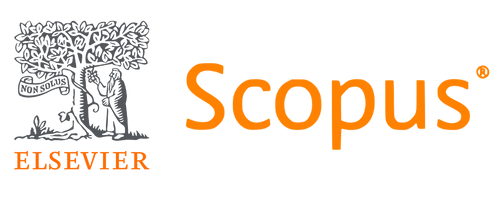JOURNAL CONTENT
Guidelines for Authors
The journal welcomes all original submissions that comply with the Aims and Scope of the journal.
Article types and general guidelines
- All submissions must be original articles, and not be under consideration by a journal elsewhere.
- If research has already been presented at a conference, this may still be acceptable for consideration, please check the journal aims and scope.
- If the article contains anything that has already been published (e.g. figures) then this must be declared and authors are responsible for obtaining relevant permissions to republish. Evidence of permission granted must be available if requested – see fuller guidelines below.
- Only English language articles are accepted.
- Authors are responsible for the language quality in their article, and is strongly recommended to have your manuscript checked by a native speaker or an English language specialist before submission, in order to ensure that the language is acceptable.
- Each article must comprise:
- An informative title: ensure that it clearly explains what the article is about
- An abstract of approximately 50–80 words: this should summarise the article, not simply introduce the topic
- Between 3–5 key words
- 2010 AMS Mathematics Subject Classification codes should be included in the manuscript.
- The main body of text should not exceed 20 pages in MMA journal style and should comprise:
- An introduction to the topic, describing the research question being addressed
- Methodology and/or theoretical framework
- Results of the research
- Discussion and interpretation of results obtained
- Conclusions, and
- Acknowledgements, declarations of conflict of interest if required
- References
- Tables, with captions
- Figures, with captions
- Text sections may be numbered sequentially for clarity. References are not numbered.
- All figures and tables should be placed within the text at the appropriate points, rather than at the end.
- For all manuscripts non-discriminatory language is mandatory. Sexist or racist terms must not be used.
- Authors must adhere to SI units. Units are not italicised.
- When using a word which is or is asserted to be a proprietary term or trade mark, authors must use the symbol ® or TM
Reproduction of copyright material
If you wish to include any material in your manuscript in which you do not hold copyright, you must obtain written permission from the copyright owner, prior to submission. Such material may be in the form of text, data, table, illustration, photograph, line drawing, audio clip, video clip, film still, and screenshot, and any supplemental material you propose to include. This applies to direct (verbatim or facsimile) reproduction as well as “derivative reproduction” (where you have created a new figure or table which derives substantially from a copyrighted source).
You must ensure appropriate acknowledgement is given to the permission granted to you for reuse by the copyright holder in each figure or table caption. You are solely responsible for any fees which the copyright holder may charge for reuse.
The reproduction of short extracts of text, excluding poetry and song lyrics, for the purposes of criticism may be possible without formal permission on the basis that the quotation is reproduced accurately and full attribution is given.
Supplemental online material
The journal can accept supplementary files that support the submitted article (e.g. audio, movie, or text files: for example a survey questionnaire which is described in the article). Supplemental information should be provided with the submission. It will not be formally reviewed but will be considered to determine whether it is required by the article. Please note that authors take fully responsibility for the content of any supplemental information, and a disclaimer on the supplemental information must clearly state that they have not been formally reviewed.
Data
We encourage all researchers to archive and share their data. Several grant funders now require this, and we believe that it benefits research by enabling other researchers to reuse and reinterpret data for the benefit of all. We encourage all authors to make their data available in suitable repositories (for example FigShare, or other similar repository) where the item will be safely archived and given a unique reference number (DOI or similar), so that it can be cited in the authors’ articles. They should then be referenced in the article (see above).
Authorship
- Each person who made an intellectual contribution to the research, and the evaluation/analysis and to the writing of the article (see the ICMJE definition of authorship) should be named as an author
- Any other persons involved with the article should be mentioned in an Acknowledgements section at the end of the article (see below)
- See the journal Authorship policies
- Authors should provide the following information:
- Full name.
- Affiliation (where the author was positioned when the research was undertaken – if authors change affiliation before publishing this should be given as a footnote)
- Address.
- Email.
- ORCiD (unique author identifier that ensures that all your works are correctly attributed to you – see https://orcid.org/): this is not mandatory, but highly recommended for the benefit of authors.
- Clear identification of the corresponding author (who will be responsible for ensuring that the correct version is submitted and that all authors agree to publication and approve any corrections during peer review and after acceptance).
- Authors must also provide a disclosure statement within the article which will acknowledge any financial, professional, personal interest or benefit they have arising from the direct applications of their research.
- The journal operates a single-blind method of peer review. This means that the authors' names are disclosed to the reviewer, but the reviewer names are not disclosed to the authors. If the authors have a specific reason why their name should be blinded from the reviewers they may request this on submission.
- People who contributed to the work (but do not fulfil the authorship criteria) should be listed in the Acknowledgments, along with their contributions. You must ensure that anyone named in the acknowledgments agrees to being named.
- Please supply all details required by any funding and grant-awarding bodies as Funding in a separate paragraph as follows:
- For single agency grants
- This work was supported by the <Funding Agency> under Grant [number xxxx].
- For multiple agency grants
- This work was supported by the <Funding Agency #1> under Grant [number xxxx]; <Funding Agency #2> under Grant [number xxxx]; and <Funding Agency #3> under Grant [number xxxx].
Ethics
The journals of Vilnius Gediminas Technical University (VILNIUS TECH) all adhere to the Core Practices of the Committee on Publication Ethics (COPE, https://publicationethics.org/core-practices) and follow their guidelines in respect of publication ethics and managing problems when they arise.
All authors are expected to comply with good practice in regard to their research and the reporting of their research. See the journal's policies. Authors' responsibilities include the following issues:
- The unattributed copying of another published or unpublished work, or the theft of the ideas of another researcher is considered a serious offence. If suspected authors will be contacted and – if under review – the article will be held until the issue is resolved. Note that all articles are checked for plagiarism when submitted.
- Authorship: all people who comply with the definition of authors (above) should be named as authors on the article, and, similarly, nobody who does not comply should be included as an author. Authors may not be added or deleted after submission without full explanation and written consent of all authors.
- Conflict of Interest: all authors must declare if they have any conflict of interest that may have biased either their research or the article submitted.
- Misleading or misreporting of findings: authors are required to ensure that they do not selectively, or incorrectly, report their findings, or use language to mislead the readers.
In all cases, the publisher reserves the rights to contact the authors' institutions is serious misconduct has been identified, and to retract any articles in which serious misconduct has been identified.
Style
- You may download the Style Files (mma.cls, plainmma.bst, a LaTeX template file template.tex and Guide for preparing article in MMA style).
- The list of references should always be in alphabetical order. We ask that you submit your references written with BibTeX and in Mathematical Modelling and Analysis bibstyle (plainmma.bst)
- Guide to using mathematical symbols and equations.
- We recommend for Authors to use the file template.tex as initial file for Mathematical Modelling and Analysis paper and the latest Style Files.
References
We ask that you submit your references written with BibTeX and in Mathematical Modelling and Analysis bibstyle (plainmma.bst)
Tables
- Tables should be designed so that they easily fit a regular journal page.
- Each table should be numbered sequentially throughout the article
- Each table must have an informative caption to describe the table. They may have footnotes if explanations of abbreviations, etc., are required.
Figures
- Figures must be saved individually as TeX/LaTeX supl. file.
- Avoid the use of colour and tints for purely aesthetic reasons.
- Figures should be produced as near to the finished size as possible.
- All figures must be numbered in the order in which they appear in the paper (e.g. figure 1, figure 2). In multi-part figures, each part should be labelled (e.g. (a), (b)).
- The filename for the graphic should be descriptive of the graphic, e.g. Fig1, Fig2a.
- Files should be saved as PDF (Portable Document Format), and should contain all the necessary font information and the source file of the application (e.g. CorelDraw/Mac, CorelDraw/PC).
- Each figure must have an informative caption to describe the figure.
Publication charges
The journal is owned by Vilnius Gediminas Technical University (VILNIUS TECH).
The journal operates as open access journal, the process is completely free of charges to both authors and readers. All publication fees are covered by Vilnius Gediminas Technical University.
Submission and decisions
All submissions should be made online at the Mathematical Modelling and Analysis site https://journals.vilniustech.lt/index.php/MMA. New users will need to create an account.
See the journal Peer review policies.
After submission all articles are evaluated by the editorial office and may be immediately rejected if they are considered to be out of the journal's scope or otherwise unfit for consideration. Otherwise all articles will be sent out for external review. Reviewer reports with a decision from the editor will be returned to the authors as soon as possible, but please be patient as reviewing can take several months.
After review, the editor will make a decision of: reject, accept, or revise. Revisions may be major or minor. If a decision of revision is made, authors are asked to make their revisions as quickly as possible – if there are extensive delays in revising an article then it may be considered a new submission. Revised articles may be sent out for review again, depending on the level of revision requested.
Copyright and publication
During submission you will be asked to sign various warranties about the article (see the VTGU policies). These include affirming that it is original and does not infringe any legal or personal rights (e.g. copyright, libel or privacy). Authors retain copyright in their articles, but grant Vilnius Gediminas Technical University (VILNIUS TECH) the right of first publication.
All articles will be published open access under a Creative Commons CC BY licence. This ensures that they receive the maximum dissemination because there are no barriers to access. This licence allows readers to disseminate and reuse the article, but always requires them to grant the authors and the first publication full credit.
See the journal policy on open access.
Corrections after publication
If any errors are discovered after publication the journal editors, in partnership with Vilnius Gediminas Technical University (VILNIUS TECH) and the authors will determine the right method of correction. See the journal policies.
JournalContent
Make a Submission
quicklinks
About Journal







